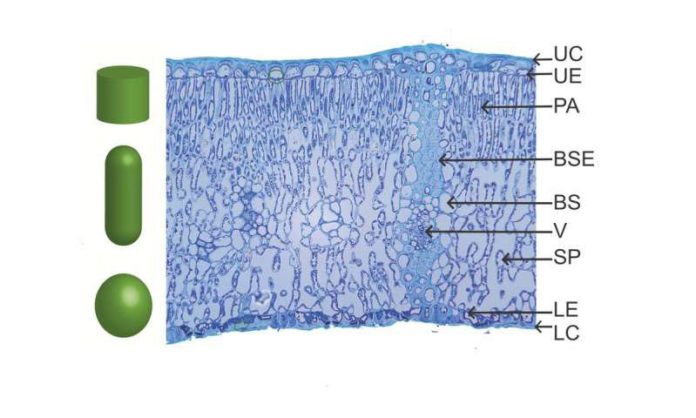In biology, it is difficult to answer a trait of plant biology’s leaf mass per area. It is simple measurement done by weighing a dried leaf and dividing by its original fresh area. Until now, Leaf mass per area has been calculated in various studies. Although, it make predictions of many processes and properties. For example, leaf photosynthetic rates, nitrogen content and plant environmental preferences. Still, there is no relationship found for leaf mass area to leaf structure.
To do so, UCLA researchers have developed a mathematical equation to explain plant growth. It will help to find what drives plant behaviors based on their cells.
Professor Lawren sack said, “The great diversity of leaves in size, shape, and color is dazzling. Yet, it is nothing as compared to the diversity of cells and tissues inside. However, we have lacked equations to relate this inner diversity to overall leaf behavior in an exact way.”
Scientists conducted a detailed study of the anatomy of 11 species growing on the grounds. The species involves included iconic species like toyon or Hollywood and a species of tea from Japan. Scientists then measured cross-sections for the sizes and numbers of cells of the different leaf. They then constructed a theoretical approach based on geometric principles to derive an equation for leaf mass area, taking into account the dimensions and numbers of cells of each type in the leaf.
Scientists strategy was to create a powerful mathematical equation that predicts the leaf mass area from its internal structure to explain plant’s growth. It also explains the difference between evergreen and deciduous leaves in their toughness.
Sack said, “The implications of these kinds of equations are enormous. Because a lower leaf mass area generally leads to greater plant growth and productivity, and a higher leaf mass area can give stress tolerance, this approach can resolve how differences in cell traits among species affect productivity and tolerance to environmental stress given climate change.”
Grace John, a UCLA doctoral student said, “If you grab a leaf from a California evergreen shrub and a deciduous sycamore tree, you can feel the difference in toughness, but it’s more challenging to explain why. With our approach, we show that evergreen leaves tend to be tougher and live longer because they have larger and denser cells.”
“It’s like body size in animal ecology, facial symmetry for the psychology of attraction, and sprint speed for NFL wide receivers. LMA has really been the uber variable for understanding plant economics, productivity, and function.”
